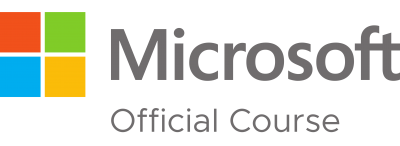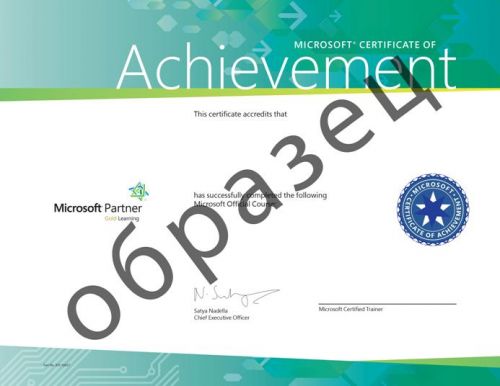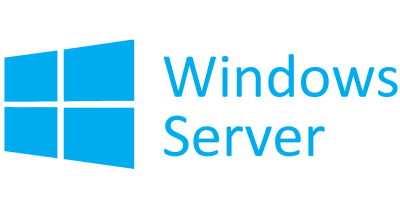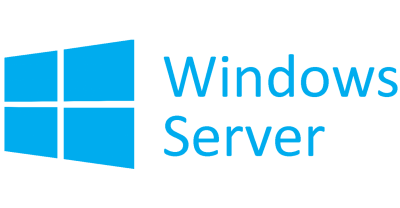Администратор Microsoft Azure (AZ-104T00)

Microsoft Azure Administrator
Курс предназначен для ИТ-профессионалов, желающих получить знания об управлении подписками Azure, администрированию инфраструктуры, обеспечению безопасности, настройке виртуальных сетей, подключении локальных сайтов, работе с хранилищем, создании и управлении виртуальными машинами, развертывании веб-приложений и контейнеров, резервном копировании и мониторинге.
Целевая аудитория
Системные администраторы, архитекторы.
Предварительные требования
- Знания технологий виртуализации;
- Знания сетевых технологий (TCP/IP, DNS, VPN, межсетевые экраны и технологии шифрования);
- Знания концепций Active;
- Знание технологий для защиты от сбоев (резервное копирование и восстановление).
По окончании курса слушатели смогут:
- Обеспечивать безопасность с использованием Azure Active Directory, пользователей и групп;
- Управлять подписками, аккаунтами, политиками и ролевой моделью контроля доступа;
- Администрировать Azure с использованием Resource Manager, Azure Portal, Cloud Shell, Azure PowerShell, CLI и шаблонов ARM;
- Выполнять настройку виртуальных сетей, включающую планирование, IP-адресацию, Azure DNS, Network Security Groups и Azure Firewall;
- Настраивать коммуникации между сайтами с использованием VNet Peering, Virtual Network Gateways, VPN-соединения;
- Управлять сетевым трафиком с использованием маршрутизации и service endpoints, Azure Load Balancer, Azure Application Gateway;
- Внедрять, настраивать и управлять Azure Storage Accounts, хранилищем типа Blob, Azure Files и Files Sync;
- Панировать, создавать и управлять виртуальными машинами;
- Администрировать Azure App Service, Azure Container Instances и Kubernetes;
- Выполнять резервное копирование файлов, папок и виртуальных машин;
- Выполнять мониторинг инфраструктуры Azure с использованием Azure Monitor, Azure Alerts, Log Analytics и Network Watcher.
Программа курса
Module 1 : Configure Microsoft Entra ID
- Define Microsoft Entra concepts, including identities, accounts, and tenants.
- Describe Microsoft Entra features to support different configurations.
- Understand differences between Microsoft Entra ID and Active Directory Domain Services (AD DS).
- Choose between supported editions of Microsoft Entra ID.
- Implement the Microsoft Entra join feature.
- Use the Microsoft Entra self-service password reset feature.
Module 2: Configure user and group accounts
- Configure users accounts and user account properties.
- Create new user accounts.
- Import bulk user accounts with a template.
- Configure group accounts and assignment types.
Module 3: Configure subscriptions
- Determine the correct region to locate Azure services.
- Review features and use cases for Azure subscriptions.
- Obtain an Azure subscription.
- Understand billing and features for different Azure subscriptions.
- Use Microsoft Cost Management for cost analysis.
- Discover when to use Azure resource tagging.
- Identify ways to reduce costs.
Module 4: Configure Azure Policy
- Create management groups to target policies and spending budgets.
- Implement Azure Policy with policy and initiative definitions.
- Scope Azure policies and determine compliance.
Module 5: Configure role-based access control
- Identify features and use cases for role-based access control.
- List and create role definitions.
- Create role assignments.
- Identify differences between Azure RBAC and Azure Active Directory roles.
- Manage access to subscriptions with RBAC.
- Review built-in Azure RBAC roles.
Module 6: Configure Azure resources with tools
- Manage resources with the Azure portal.
- Manage resources with Azure Cloud Shell.
- Manage resources with Azure PowerShell.
- Manage resources with Azure CLI.
Module 7: Use Azure Resource Manager
- Identify the features and usage cases for Azure Resource Manager.
- Describe each Azure Resource Manager component and its usage.
- Organize your Azure resources with resource groups.
- Apply Azure Resource Manager locks.
- Move Azure resources between groups, subscriptions, and regions.
- Remove resources and resource groups.
- Apply and track resource limits.
Module 8: Configure resources with Azure Resource Manager templates
- List the advantages of Azure templates.
- Identify the Azure template schema components.
- Specify Azure template parameters.
- Locate and use Azure Quickstart Templates.
Module 9: Configure virtual networks
- Describe Azure virtual network features and components.
- Identify features and usage cases for subnets and subnetting.
- Identify usage cases for private and public IP addresses.
- Create and determine which resources require public IP addresses.
- Create and determine which resources require private IP addresses.
- Create virtual networks.
Module 10: Configure network security groups
- Determine when to use network security groups.
- Implement network security group rules.
- Evaluate network security group effective rules.
- Examine advantages of application security groups.
Module 11 : Configure Azure DNS
- Identify features and usage cases for domains, custom domains, and private zones.
- Verify custom domain names using DNS records.
- Implement DNS zones, DNS delegation, and DNS record sets.
Module 12 : Configure Azure virtual network peering
- Identify usage cases and product features of Azure virtual network peering.
- Configure your network to implement Azure VPN Gateway for transit connectivity.
- Extend peering by using a hub and spoke network with user-defined routes and service chaining.
Module 13 : Configure network routing and endpoints
- Implement system routes and user-defined routes.
- Configure a custom route.
- Implement service endpoints.
- Identify features and usage cases for private links and endpoint services.
Module 14 : Configure Azure Load Balancer
- Identify features and usage cases for Azure load balancer.
- Implement public and internal Azure load balancers.
- Compare features of load balancer SKUs and configuration differences.
- Configure back-end pools, load-balancing rules, session persistence, and health probes.
Module 15 : Configure Azure Application Gateway
- Identify features and usage cases for Azure Application Gateway.
- Implement Azure Application Gateway, including selecting a routing method.
- Configure gateway components, such as listeners, health probes, and routing rules.
Module 16: Configure storage accounts
- Identify features and usage cases for Azure storage accounts.
- Select between different types of Azure Storage and storage accounts.
- Select a storage replication strategy.
- Configure network access to storage accounts.
- Secure storage endpoints.
Module 17 : Configure Azure Blob Storage
- Identify features and usage cases for Azure Blob Storage.
- Configure Blob Storage and Blob access tiers.
- Configure Blob lifecycle management rules.
- Configure Blob object replication.
- Upload and price Blob Storage
Module 18 : Configure Azure Storage security
- Configure a shared access signature (SAS), including the uniform resource identifier (URI) and SAS parameters.
- Configure Azure Storage encryption.
- Implement customer-managed keys.
- Recommend opportunities to improve Azure Storage security.
Module 19 : Configure Azure Files and Azure File Sync
- Identify storage for file shares and blob data.
- Configure Azure Files shares and file share snapshots.
- Identify features and usage cases of Azure File Sync.
- Identify Azure File Sync components and configuration steps.
Module 20 : Configure Azure Storage with tools
- Configure and use Azure Storage Explorer.
- Configure the Azure Import/Export service.
- Use the WAImportExport tool with the Azure Import/Export service.
- Configure and use AZCopy.
Module 21 : Configure virtual machines
- Create a virtual machine planning checklist.
- Determine virtual machine locations and pricing models.
- Determine the correct virtual machine size.
- Configure virtual machine storage.
Module 22: Configure virtual machine availability
- Implement availability sets and availability zones.
- Implement update and fault domains.
- Implement Virtual Machine Scale Sets.
- Autoscale virtual machines.
Module 23 : Configure Azure app service plans
- Identify features and usage cases of the Azure App Service.
- Select an appropriate Azure App Service plan pricing tier.
- Scale the App Service Plan.
- Scale out the App Service Plan.
Module 24 : Configure Azure App Services
- Identify features and usage cases for the Azure App Service.
- Create an app with Azure App Service.
- Configure deployment settings, specifically deployment slots.
- Secure your Azure App Service app.
- Configure custom domain names.
- Back up and restore your Azure App Service app.
- Configure Azure Application Insights.
Module 25 : Configure Azure Container Instances
- Identify when to use containers versus virtual machines.
- Identify the features and usage cases of Azure Container Instances.
- Implement Azure Container Groups.
Module 26 : Configure file and folder backups
- Identify features and usage cases for Azure Backup.
- Configure Azure Recovery Services Vault backup options.
- Implement on-premises file and folder backup.
- Configure the Microsoft Azure Recovery Services (MARS) agent for Azure Backup.
Module 27 : Configure virtual machine backups
- Identify features and usage cases for different Azure backup methods.
- Configure virtual machine snapshots and backup options.
- Implement virtual machine backup and restore, including soft delete.
- Compare the Azure Backup agent to the Azure Backup Server .
- Perform site-to-site recovery by using Azure Site Recovery.
Module 28 : Configure Azure Monitor
- Identify the features and usage cases for Azure Monitor.
- Configure and interpret metrics and logs.
- Identify the Azure Monitor components and data types.
- Configure the Azure Monitor Activity Log.
Module 29 : Configure Azure alerts
- Identify Azure Monitor alerts, including alert types and alert states.
- Configure Azure Monitor alerts.
- Create alert rules and action groups.
Module 30 : Configure Log Analytics
- Identify the features and usage cases for Log Analytics.
- Create a Log Analytics workspace.
- Structure a Log Analytics query and review results.
Module 31 : Configure Network Watcher
- Identify the features and usage cases for Azure Network Watcher.
- Configure diagnostic capabilities like IP Flow Verify, Next Hop, and Network Topology.
Документы об окончании курса
- Сертификат Microsoft об окончании авторизованного курса
- Сертификат Учебного центра Noventiq
- Cертификат об обучении установленного образца








